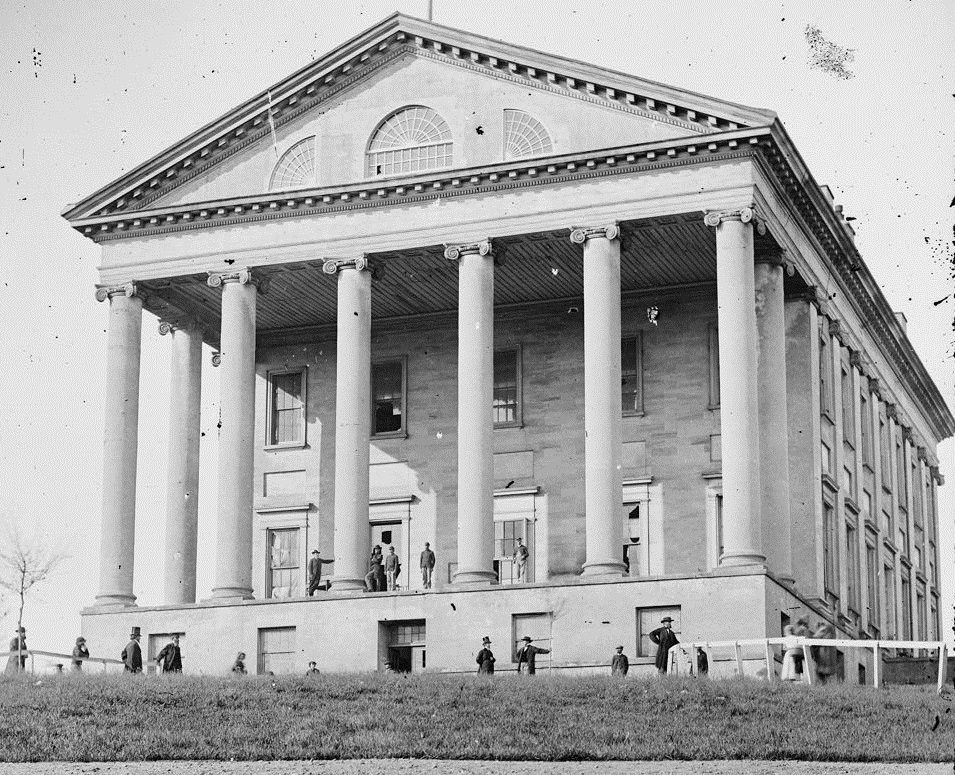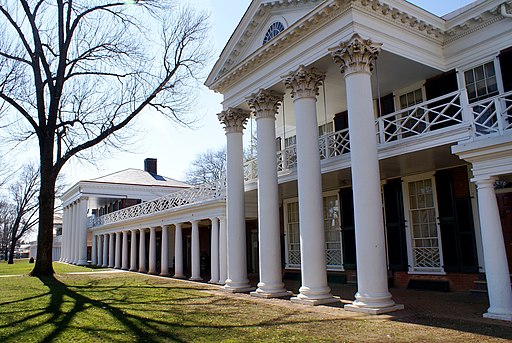We're quite familiar with Thomas Jefferson as a founding father, author of the Declaration of Independence, and the third President of the United States. And while we might also know that he was a state legislator in Virginia, the Secretary of State under George Washington, and a man knowledgeable in many disciplines (surveying, mathematics, horticulture, mechanics, linguistics, and philosophy, to name a few); we don't often think of him as an influential architect. He was, in fact, a proven and accomplished architect in the classical tradition. He designed many buildings and throughout his life he made many architectural drawings, and he wrote extensively about architectural design.
Since there were no schools of architecture in Virginia during his time, Jefferson was self-taught, studying books and architectural designs on his own. He was influenced mostly by an Italian architect, Andrea Palladio, who wrote The Four Books of Architecture during the 1500s. Palladio was widely influential in classical architecture, which is based on the principles of Greek and Roman design.
Jefferson's architecture is typified by the use of octagons in the designs, which is a departure from Palladio's style. Jefferson used octagons as design motifs, and he halved them or elongated them in designs, or used the octagon as a whole, such as in the dome of Monticello or the Poplar Forest house.
 |
| Monticello |
Jefferson's primary home, Monticello (meaning "little mount"), is the best known of his designs. He designed the main house using neoclassical design principles, and later included elements popular in Europe at the time, and some of his own design solutions. The main house was to serve as a plantation house but had the form of a villa. After his time serving in France, he began some remodeling on the house, adding a center hallway and parallel set of rooms. The most dramatic feature of Monticello is the octagonal dome he added, placed above the west front of the building instead of a second-story portico. The room inside was beautiful, but apparently not often used, probably because it was hot in summer and cold in winter, and was only accessible by a steep and narrow flight of stairs.
Jefferson was very interested in Roman and Renaissance ideas about temperature-control techniques such as ground-cooled air and heated floors. The central hall at Monticello had aligned windows designed to allow air to pass through the house and cool it. The house has approximately 11,000 square feet of living space. It was rather sparsely furnished, because Jefferson considered much furniture to be a waste of space. The dining room table was set up only at mealtimes, and bedrooms featured beds build into alcoves in the thick walls that contained storage space.
Monticello is now a National Historic Landmark, and is the only private home in the USA designated as a UNESCO World Heritage Site. It's a popular tourist attraction, and one I hope to be able to visit again soon! We were there once many years ago, and arrived too late in the day to do the full tour of the house and grounds, so I've had only a brief look.
Thomas Jefferson also designed the Virginia State Capitol, buildings at the University of Virginia (which he founded after retiring from public office), and Poplar Forest.
 |
| Virginia State Capitol |
 |
| University of Virginia |
 |
| University of Virginia Rotunda, architectural drawing - 1819 draft |
 |
| Poplar Forest |
This post is linked at Blogging Through the Alphabet hosted by A Net In Time and Hopkins Homeschool. Join in to see what others are sharing related to this week's letter!
©2006-2017 Homeschool Coffee Break. All rights reserved. All text, photographs, artwork, and other content may not be reproduced or transmitted in any form without the written consent of the author. http://kympossibleblog.blogspot.com/










































4 comments:
This was a fun read! I learned some things I can pass along to my kids - Thank You!
I enjoyed my visit to Monticello a few years ago. I hadn't realized he spoke so many languages and that he wasn't very good at his money management. He at one point sold his beloved books only to buy them back. lol
That was so interesting to read Kym. I learned much. Leaders of the past knew so much didn't they? just so very very accomplished.
I was just talking to a friend about the Monticello Teacher Institute. I hope to someday see Monticello myself.
Post a Comment
I love comments! It's like visiting over a virtual cup of coffee.